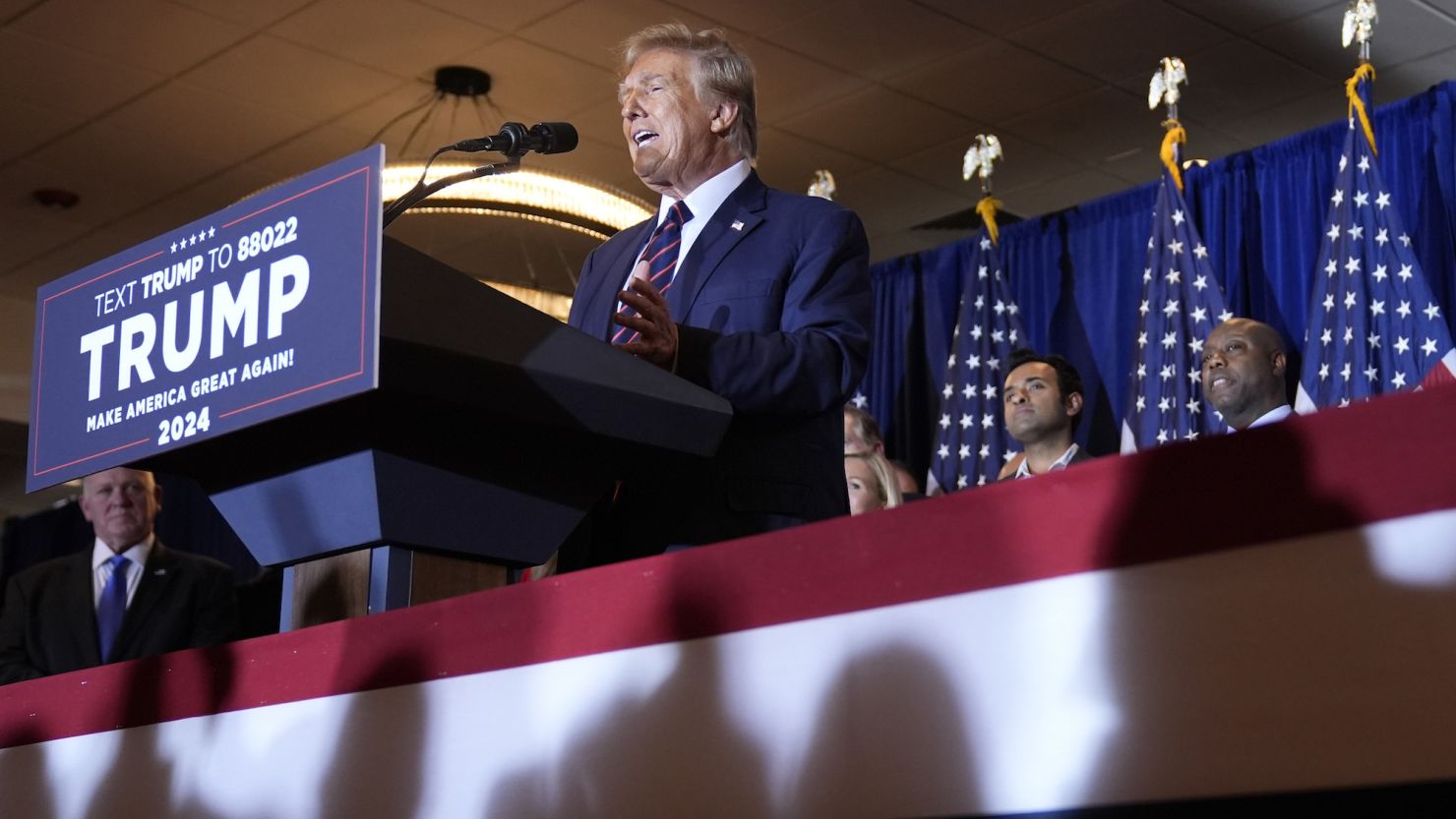Donald Trump won a historic primary victory Tuesday night in New Hampshire.
Unofficial returns at time of publication have the former president at about 55% of the vote to Nikki Haley’s 43%. Not only does Trump’s win make him the prohibitive favorite for the GOP nomination, but it leaves Haley with an unclear road map heading forward.
Indeed, in a number of ways, Trump’s New Hampshire triumph puts him on a GOP primary tier few, if any, Republicans have reached.
Let’s start off with Trump’s share of the vote. He’s only the second nonincumbent Republican to win a majority of the GOP primary vote in New Hampshire in the modern era. The only other was Ronald Reagan in 1980, and Trump’s 55% surpasses Reagan’s 50.2%.
Trump’s big vote share isn’t the only way we know New Hampshire Republicans love him. He is also just the second nonincumbent Republican to win the New Hampshire primary twice in the modern era. The other Republican was John McCain – a name synonymous with success in the first-in-the-nation primary.
Trump’s win comes on the back of his dominant victory in the Iowa caucuses, where he became the first nonincumbent Republican to earn a majority of the vote in the modern era.
Putting aside his wide victory margins, the fact that Trump was able to win both Iowa and New Hampshire is quite unusual. No other nonincumbent Republican has ever done it. Mitt Romney in 2012 came the closest (winning New Hampshire but losing Iowa by 24 votes) – and he took less than 40% in New Hampshire and under 25% of the vote in Iowa.
Trump’s ability to win Iowa and New Hampshire with such ease tells you how strong his candidacy is among Republicans. He appeals to different parts of the party, as evidenced by the fact that he succeeded in two very different contests in two fairly different states.
Iowa is a low turnout caucus that engages most with core party activists. New Hampshire is a primary, which sees relatively high turnout. Whereas New Hampshire openly invites registered independents (or undeclared voters) to cast a ballot, Iowa’s caucuses have few non-Republicans taking part.
Moreover, Iowa is a contest dominated by conservatives and evangelical Christians. New Hampshire voters are more moderate and far less religious. New Hampshire’s electorate is wealthier than Iowa’s, as well.
Put another way, New Hampshire should have been a far worse state for Trump. His biggest backers look a lot more like the Iowa electorate than New Hampshire voters: conservatives, religious Republicans and Republicans of more modest financial means.
None of that stopped Trump from pulling in the largest share of the vote for an nonincumbent in New Hampshire GOP primary history.
All of this, of course, is bad news for Haley. The former South Carolina governor, who insisted Tuesday she was staying in the race, is strongest among voters who can be found in disproportionately large quantities in New Hampshire compared with other primary and caucus states.
The polling in South Carolina, the next major contest to see Haley and Trump on the same ballot, is not good for Haley, despite it being her home state. Trump is again pulling in a majority of the vote, well ahead of Haley, and this polling was done before he won Iowa and New Hampshire.
The national polling has Trump ahead of Haley by more than 50 points. No nonincumbent Republican has ever been ahead of his nearest rival by more than 50 points in the immediate aftermath of both Iowa and New Hampshire.
Indeed, at this point, Trump does not appear to be trailing in any state, according to the polls. He’s even well ahead in Vermont, which should be one of Haley’s best states because it has an even less conservative GOP electorate than New Hampshire.
It seems quite plausible at this point that Trump may pull off the ultimate historic GOP primary win: becoming the first nonincumbent Republican to go undefeated in all 50 states during the primary season.





